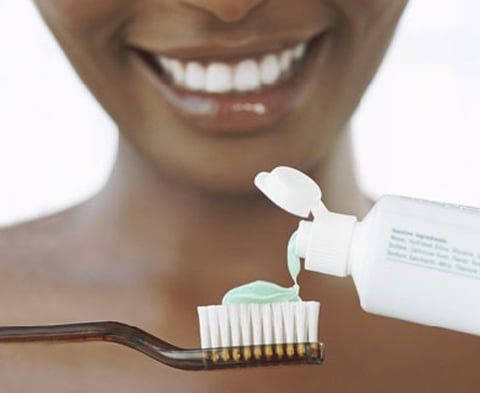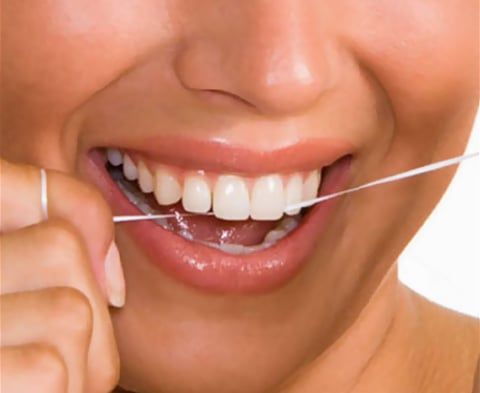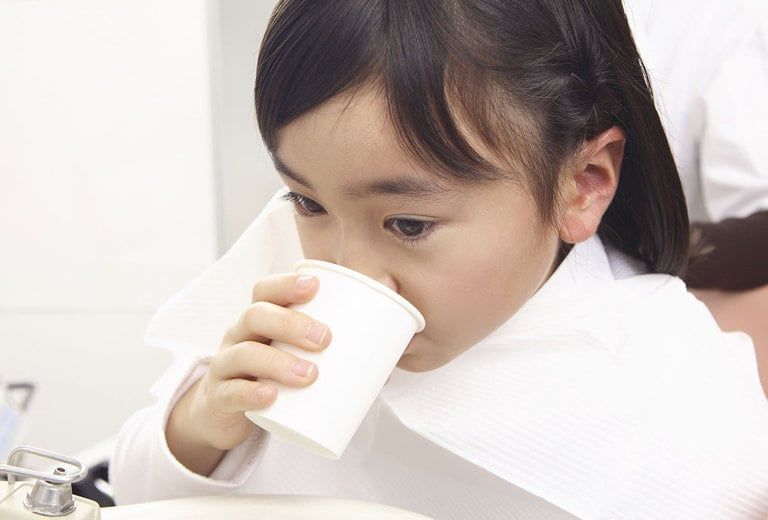Home Care
What is the best kind of toothbrush?
Generally speaking, a soft bristled toothbrush is best. Whether you use a manual toothbrush or an electric, anything harder than soft, is too hard. Stiff bristles may give you that clean feeling, but they can also abrade your teeth and cause gum recession.

Brushing
Proper brushing of teeth can be done in three steps:
Step 1 - Place bristles along the gum line at a 45 degree angle. Gently brush using a circular motion along the outer and inner tooth surfaces.
Step 2 - Brush each tooth individually. Tilt brush vertically behind the front teeth. Using the front half of the brush, use the same circular motion.
Step 3 - Place the brush against the biting surface of the teeth and use a gentle back-and-forth motion. Brush the tongue to remove odor-producing bacteria.
How do I use dental floss?
Floss is cheap, so don't be stingy! Tear off about a forearm's length to start. Wrap one end around the middle finger of one hand to "anchor" it and pick up the other end about 4-6 inches away with the middle finger of the other hand. This allows you to manipulate the floss with your thumb and fore finger. As you soil a section of floss, "reel" in another 4-6 inches of clean floss with the anchor finger as you release the floss with the other finger.
Once you get the floss past the tooth contact, move the floss up and down, perpendicular to the tooth. Never shoe-shine the teeth in a back-and-forth motion! You will either notch your teeth or cut your gums, or both!

Fluoride
Fluoride, a substance that's found naturally in water, plays an important role in healthy tooth development and cavity prevention.
Fluoride combats tooth decay in two ways:
- It strengthens tooth enamel, a hard and shiny substance that protects the teeth, so that it can better resist the acid formed by plaque.
- Fluoride allows teeth damaged by acid to repair, or re-mineralize, themselves.
Fluoride cannot repair cavities, but it can reverse low levels of tooth decay and thus prevent new cavities from forming.
The American Academy of Pediatrics recommends that these fluoride supplements be given daily to children between the ages of 6 months and 16 years. The dosage will change as your child grows. Only children living in non-fluoridated areas or children who drink only non-fluoridated bottled water should receive supplements.
Most children get the right amount of fluoride through a combination of fluoridated toothpaste and fluoridated water or supplements. Too much fluoride before 8 years of age can cause enamel fluorosis, a discoloration or mottling of the permanent teeth. This condition is unsightly but harmless and often can be treated with cosmetic procedures.

A Beautiful Smile Is Waiting For You
Our office provides smile makeovers to achieve the beautiful, natural look you seek. We can reshape your natural teeth to make them straighter and more youthful. Our office is easily accessible and makes it convenient to those living near Brooklyn to get the care they deserve.
Book An Appointment Now
Book An Appointment Now
Do you need dental work done? Has it been a while since you've been to the dentist? Do you just need a regular cleaning or are you looking for a brand new smile? Requesting an appointment is available online 24/7 and is as simple as submitting a simple form.
Book An Appointment Now